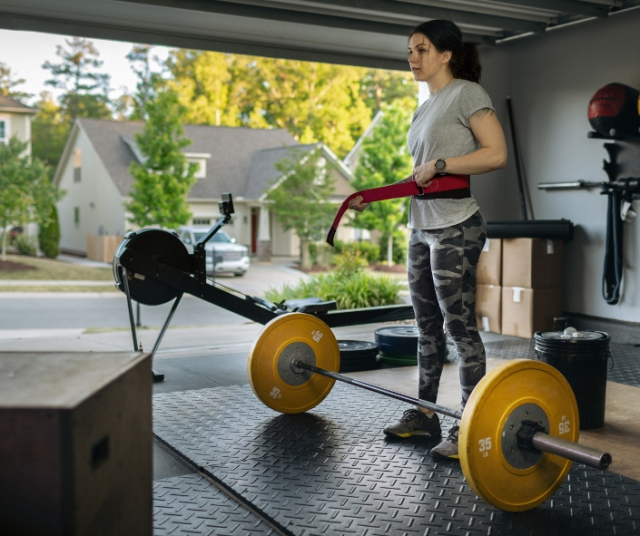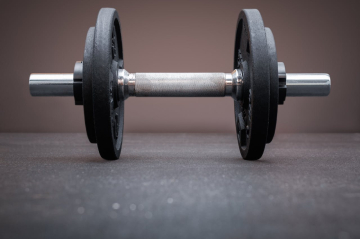In the search for a healthier and more active life, setting up a personal gym at home has become an increasingly popular option. With the convenience of having a workout space at home, you can avoid the gym crowds and fit your workout routines into your own schedule. However, the key to an effective home gym is to carefully select the right equipment and accessories that fit your training needs and goals. In this article, we will explore the available options in detail and provide a complete buying guide to help you build the perfect home gym.
Evaluate your Space and Needs.
Before you start purchasing equipment, it is essential to evaluate the space available and consider your training needs and goals. Determine what types of exercises you would like to perform and how much space you are willing to dedicate to your home gym. Also, consider factors such as ventilation, lighting, and access to electricity if you plan to use electrical equipment.
Cardio equipment.
Cardio equipment is essential for improving cardiovascular health and burning calories. Here are some popular options:
Treadmill.
A treadmill is a great option for running or walking indoors. Look for models that offer various speeds and inclines to suit your fitness level. Some treadmills also come with preset training programs for a variety of fitness goals.
Stationary Bicycle.
Stationary bikes are perfect for low-impact workouts. You can opt for a spin bike for more intensive workouts or a recumbent bike for more comfort. Look for features like seat and handlebar adjustment to ensure a comfortable position during exercise.
Elliptical.
Elliptical machines offer a full-body workout and are easy on the joints. Look for models with different resistance levels and pre-established training programs. Some ellipticals also have digital displays that show training metrics such as distance traveled, calories burned, and heart rate.
Rowing.
Rowing machines provide an excellent cardiovascular workout and strengthen your back and arm muscles. Look for models with an ergonomic design and padded seats for greater comfort during exercise. Also, check out the adjustable resistance to adapt the intensity level to your training needs.
Force Equipment.
Strength training is essential for developing strong, toned muscles. Here are some options to consider:
Free Weights.
Free weights, such as dumbbells and barbells with interchangeable plates, are versatile and effective for strength training. Invest in a variety of weights to adapt your workouts as you progress. Also, consider purchasing a set of adjustable weights to save space and money.
Multistation Machine.
Multi-station machines offer a variety of strength exercises on one piece of equipment. Look for a machine that includes a chest press, a high and low pulley, and a leg station for a complete workout. Check that the machine is sturdy and built with durable materials to ensure its longevity.
Weight bench.
An adjustable weight bench allows you to perform a variety of weightlifting exercises, such as bench press, shoulder press, and leg curls. Make sure the bench is sturdy and comfortable, with high-quality padding and an ergonomic design. Some benches also have incline and decline options to increase exercise variety.
Resistance Bands.
Resistance bands are an affordable and portable option for strength training. They are ideal for muscle toning and rehabilitation exercises. Look for a set of resistance bands with different resistance levels to adapt your workouts to your physical needs and abilities.
Accessories and accessories.
In addition to the main equipment, consider adding some accessories to enhance your training experience and maximize your results:
Yoga mat.
A yoga mat provides a cushioned surface for stretching, yoga and Pilates exercises. Look for a durable, non-slip mat with enough thickness to protect your joints during exercise. Also, consider a mat with alignment lines to help you maintain correct posture during exercises.
Exercise Ball.
Exercise balls are great for improving balance, stability, and core strength. Use them to perform abdominal exercises, stretching and strengthening. Look for a high-quality, durable exercise ball that fits your height and weight.
Stopwatch or Smart Watch.
A stopwatch or smartwatch will help you track your workout times, heart rate, and calories burned. Choose a device that fits your needs and budget, with features like heart rate monitoring, built-in GPS, and activity tracking capabilities.
Full Length Mirror.
A full-length mirror will allow you to correct your form and technique during exercises. In addition, it will help you stay motivated by seeing your physical progress. Look for a large, distortion-free mirror that allows you to see your entire body while you perform the exercises. Also, consider a mirror with a sturdy, secure frame to prevent breakage or falls.
Setting up a personal gym at home can be a valuable investment in your health and well-being. By selecting the right equipment and accessories, you can create a versatile and effective training space that suits your specific needs and goals. Remember to start small and consult with a health professional or personal trainer before starting any new exercise program. May you enjoy your new home gym and a more active and healthy life!






